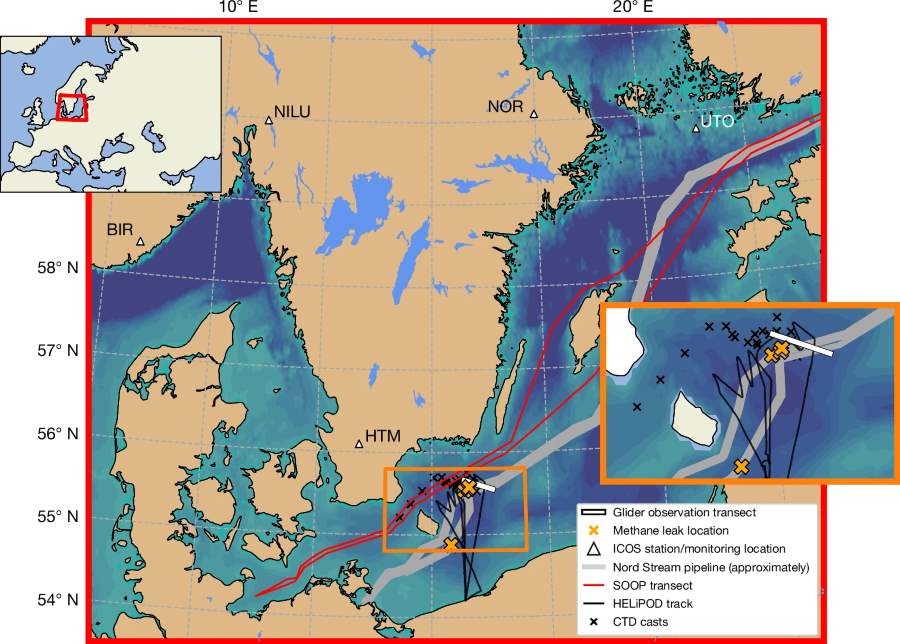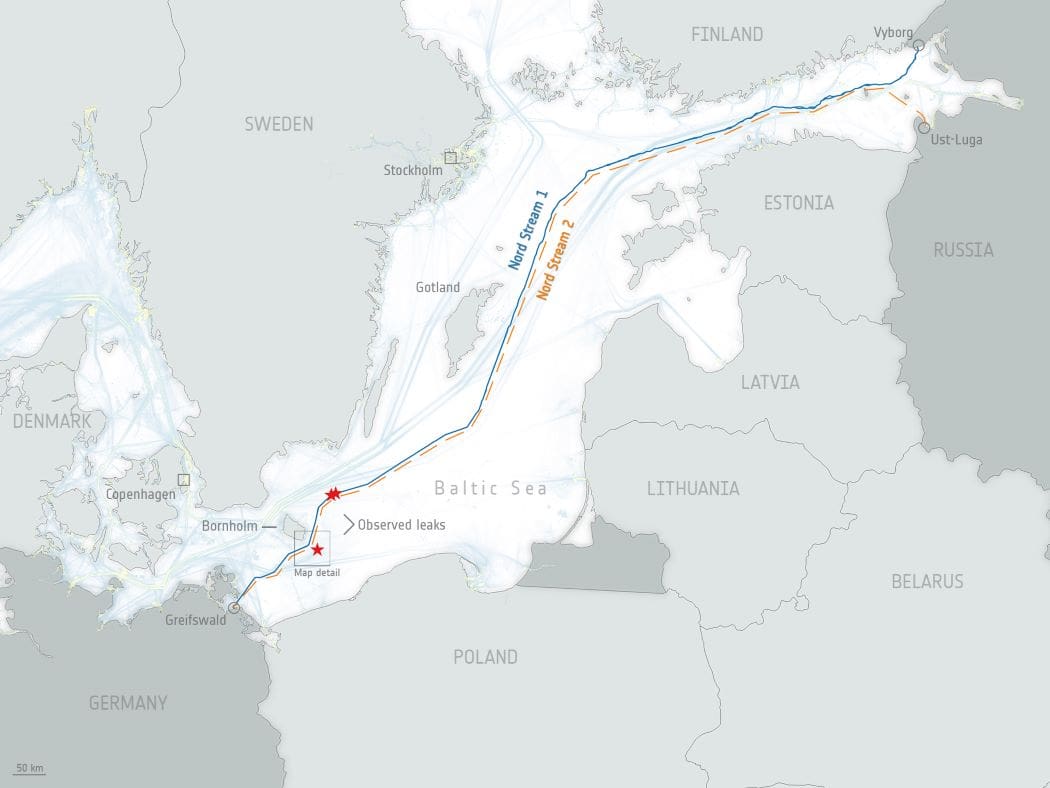Paris, France | AFP
A series of underwater explosions that ruptured the Nord Stream gas pipelines in 2022 caused the largest known methane leak on record from a single incident, according to new research published on Wednesday.
Scientists estimate the rupture of the major pipeline for transporting Russian gas to Europe released approximately 465,000 tonnes of methane into the atmosphere — well above earlier estimates, but just a fraction of total global emissions.
The exact cause of the blasts in September 2022, just months after Russia’s invasion of Ukraine, is still unknown, though Moscow and Kyiv have traded blame over this and other damage of energy infrastructure.

In three new studies on the Nord Stream leak — one in Nature1 and two in a separate journal Nature Communications2,3 — researchers said its potential impact on the environment and climate remained unclear.
But the leak “represents the largest recorded amount of methane released from a single transient event”, wrote Stephen Harris and others in Nature.
Though significant, this was equivalent that year to 0.1 percent of human-caused emissions of methane, a powerful greenhouse gas many times more effective at trapping heat in the short term than carbon dioxide.
Methane is emitted naturally from wetlands and rivers but also cows, rice fields and landfills.
A leading source of human-caused emissions is oil and gas projects, and fixing leaky pipelines and other infrastructure is considered a particularly cost-effective way to quickly slow global warming.
“While extraordinary in its magnitude, the Nord Stream explosions remind us of the immediate climate opportunity represented by reducing methane emissions across the oil and gas industry,” said Manfredi Caltagirone, head of the UN Environment Programme’s International Methane Emissions Observatory (IMEO), which supported the research.
Unclear impact
After the explosions beneath the Baltic Sea damaged the Nord Stream pipelines, gas began bubbling up at four rupture points, creating enormous foamy patches on the surface.
There was an “immediate desire” among scientists to determine the size of such a clearly significant leak, said Harris from IMEO.
This was challenging because it was difficult to know how much methane was absorbed in the ocean and how much leaked into the atmosphere.
Early estimates for the Nord Stream leak ranged from 70,000 tonnes to 300,000 tonnes.
For the research in Nature, scientists used atmospheric data, satellite images, marine observations and aerial measurements to model how much methane might have escaped the ocean.
It “far exceeds“ any other leak of its kind and was equivalent to 30 percent of Germany’s annual methane emissions, wrote Friedemann Reum from the German Aerospace Centre in Nature Communications.
Another paper in the same journal looked at the impact of the leaks on protected marine areas in the Baltic.
Martin Mohrmann from Sweden’s Voice of the Ocean Foundation and colleagues suggested 14 percent of the region experienced methane concentrations five times average levels.
More than 150 countries have signed a pledge to slash methane emissions, but atmospheric concentrations of this potent greenhouse gas still hit record highs in 2024.
The International Energy Agency has noted that normal oil and gas operations around the world release the same amount of methane as the Nord Stream explosion every single day.
nal/np/klm/rl
© Agence France-Presse
Journal Reference:
(1) Harris, S.J., Schwietzke, S., France, J.L. et al. ‘Methane emissions from the Nord Stream subsea pipeline leaks’, Nature (2025). DOI: 10.1038/s41586-024-08396-8
(2) Reum, F., Marshall, J., Bittig, H.C. et al. ‘Airborne observations reveal the fate of the methane from the Nord Stream pipelines’, Nature Communications 16, 351 (2025). DOI: 10.1038/s41467-024-53780-7
(3) Mohrmann, M., C. Biddle, L., Rehder, G. et al. ‘Nord Stream methane leaks spread across 14% of Baltic waters’, Nature Communications 16, 281 (2025). DOI: 10.1038/s41467-024-53779-0
Article Source:
Press Release/Material by AFP
Featured image: This map shows the pair of Nord Stream natural gas pipelines that runs under the Baltic Sea from Russia to Germany. It comprises the Nord Stream 1 pipeline running from Vyborg in northwest Russia, near Finland, and the Nord Stream 2 pipeline running from Ust-Luga in northwest Russia near Estonia. Credit: ©ESA




